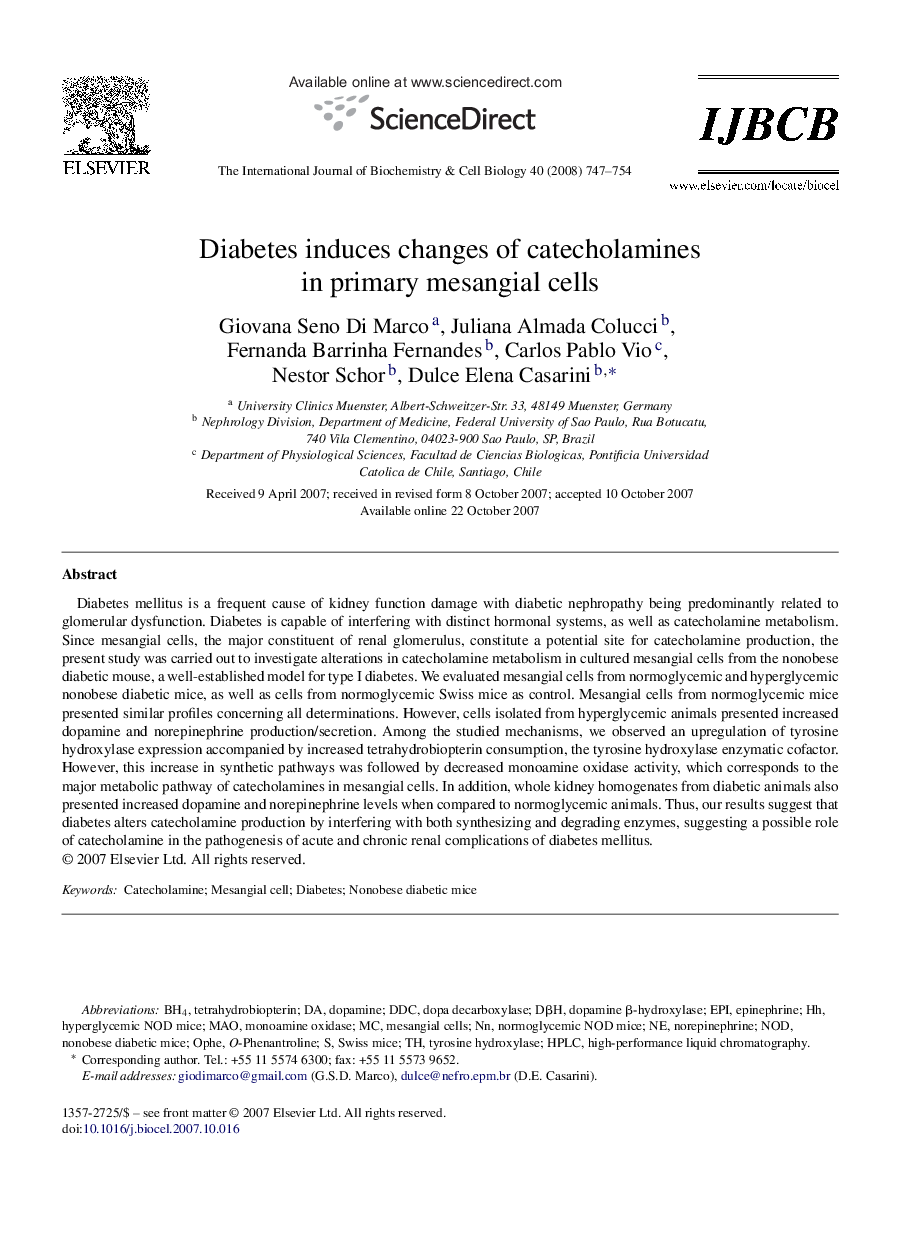| Article ID | Journal | Published Year | Pages | File Type |
|---|---|---|---|---|
| 8326278 | The International Journal of Biochemistry & Cell Biology | 2008 | 8 Pages |
Abstract
Diabetes mellitus is a frequent cause of kidney function damage with diabetic nephropathy being predominantly related to glomerular dysfunction. Diabetes is capable of interfering with distinct hormonal systems, as well as catecholamine metabolism. Since mesangial cells, the major constituent of renal glomerulus, constitute a potential site for catecholamine production, the present study was carried out to investigate alterations in catecholamine metabolism in cultured mesangial cells from the nonobese diabetic mouse, a well-established model for type I diabetes. We evaluated mesangial cells from normoglycemic and hyperglycemic nonobese diabetic mice, as well as cells from normoglycemic Swiss mice as control. Mesangial cells from normoglycemic mice presented similar profiles concerning all determinations. However, cells isolated from hyperglycemic animals presented increased dopamine and norepinephrine production/secretion. Among the studied mechanisms, we observed an upregulation of tyrosine hydroxylase expression accompanied by increased tetrahydrobiopterin consumption, the tyrosine hydroxylase enzymatic cofactor. However, this increase in synthetic pathways was followed by decreased monoamine oxidase activity, which corresponds to the major metabolic pathway of catecholamines in mesangial cells. In addition, whole kidney homogenates from diabetic animals also presented increased dopamine and norepinephrine levels when compared to normoglycemic animals. Thus, our results suggest that diabetes alters catecholamine production by interfering with both synthesizing and degrading enzymes, suggesting a possible role of catecholamine in the pathogenesis of acute and chronic renal complications of diabetes mellitus.
Keywords
Related Topics
Life Sciences
Biochemistry, Genetics and Molecular Biology
Biochemistry
Authors
Giovana Seno Di Marco, Juliana Almada Colucci, Fernanda Barrinha Fernandes, Carlos Pablo Vio, Nestor Schor, Dulce Elena Casarini,
